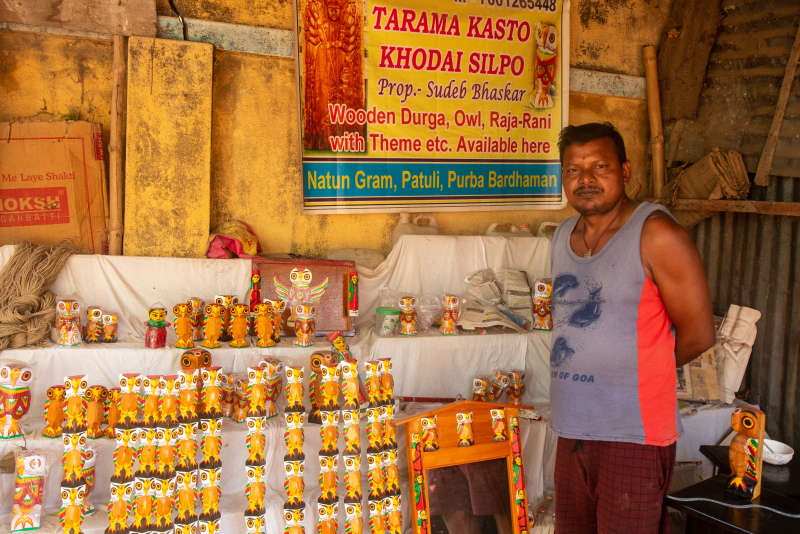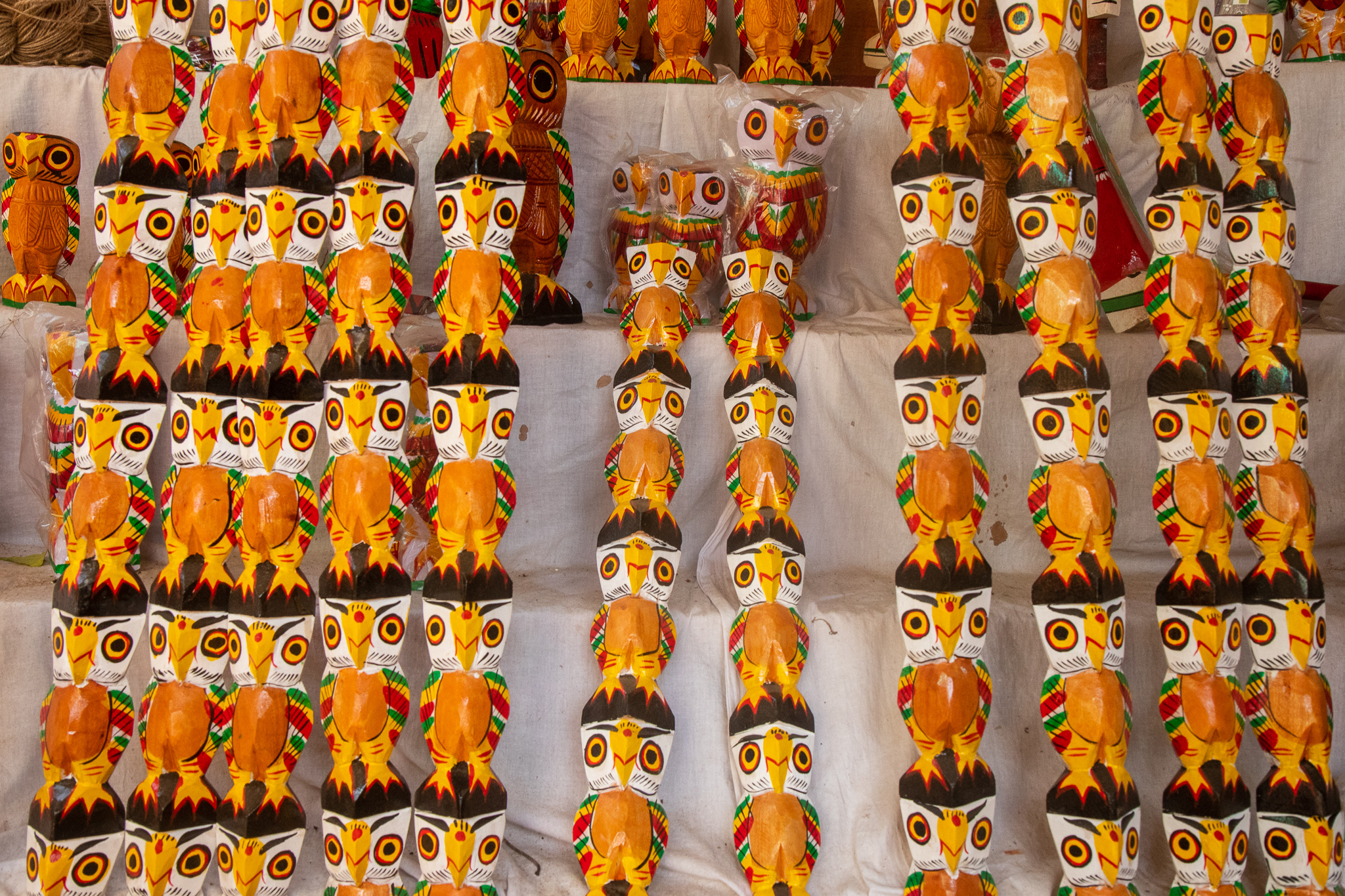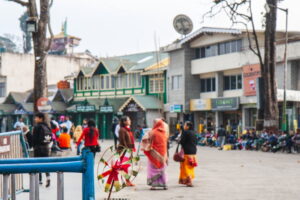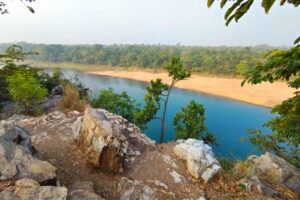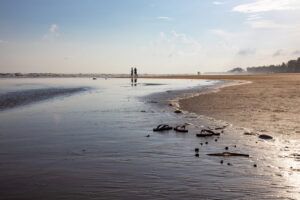I have a soft corner for wooden toys. In 2017, when we went for a family trip to Kodaikanal-Ooty-Mysore, I planned a stop at Channapatna and at least a detailed visit to a workshop there. But my son was so exhausted by the Mysore heat in March, vomiting repeatedly and getting dehydrated, that it compelled me to shorten my time in Channapatna. Apart from spending half an hour at roadside stores and buying a few wooden pieces of souvenirs, I could not do much there.
So, when I read about Natungram in an online travel portal, I immediately included the place in my “to-explore” places list. Finally, my trip to Beharampore in Murshidabad gave me one such opportunity. On my way to Beharampore, I took a slight detour towards Katwa and visited the village. Although initially, Google Maps showed me Natungram is very close to Katwa town. But pretty soon, I realised that quite a few villages with the same name were nearby. Finally, when I asked about Agradwip Natungram, I got the right route direction.
The narrow, kaccha village roads make things a little difficult for an SUV to move and turn. But the uniqueness of this place is worth the effort we put into visiting the place. A slight detour that eventually becomes a long one, the hours spent stuck in a traffic jam due to work in progress on the roads that we took for this detour, and the very late lunch almost close to sunset at Beharampore all seemed acceptable for that extra couple of hours we spent at Natungram.
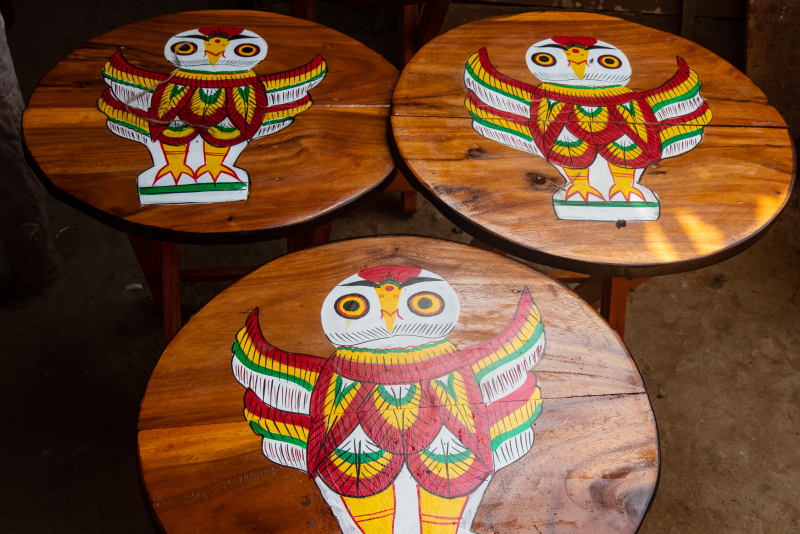
Table of Contents
About
Natungram is like another countryside in West Bengal – kaccha village roads between paddy fields, bamboo orchards on the backside of mud houses, a few pucca houses here and there, ducks swimming in algae-covered ponds and kids playing barefooted on the dusty roads.
The only difference is the toys those kids were playing with. Those toys were mostly made from wooden blocks. And the large tree logs or cut blocks dumped on the open premises of the houses, the so-called workshops. Only the final products are kept in a covered place.
All the family members were busy taking part in the workshop. The males are busy shaping the wooden blocks and carving out the figures while women, both elderly and young, help design, burnish and colour the dolls.

History of the tradition of making wooden items
The ancestors of these artisans settled in this village almost 250 years back. And they passed their skill to their descendants over the years after years. The families are called Bhaskar or Sutradhar, which they proudly use as the title of their names. Now, around 50-odd families in a half-a-kilometre radius area engage themselves in these woodcraft works.
Natungram is famous for the Lakkhipyancha (the owlets) and the Raja-Rani (king and queen) doll. You will not find many other types apart from these two. These doll-making artworks have come through families for almost three centuries now. The Raja-Rani duo doll was originally carved out to pay respect to the local king and queen in the old days. At the same time, the concept of the doll of owlets came from the idea that the owl, which is worshipped as the Vahana of the goddess of Lakkhi, brings good luck to families. Laxmi is the goddess of wealth. And owl being her vehicle, also symbolises the arrival of wealth and fortune. That is why keeping a pair of the owlets’ figures is always believed to keep wealth inside the house.
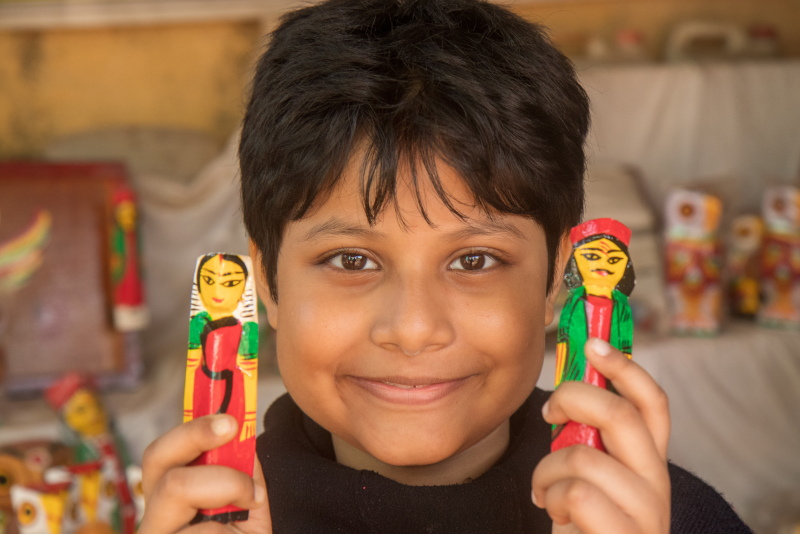
Workshops and present situation
With time the demand for those wooden figures gradually declined, and these sculptors now improvised themselves with training from the government and NGOs. And now, they also make furniture items like stools, decorated mirrors, coffee tables, small bedside tables, lampshades, utility drawers and large dining or reading tables.
They get orders from cities by phone or online, prepare customised products, and deliver them to houses, mansions, heritage or boutique hotels. The busyness of the families, especially the males in innovative products, reflects the upcoming demand for the new range of decorated products. At the same time, the women and the schoolgoers are still busy decorating the age-old wooden dolls.

How to reach
Natungram is around a four-hour drive from Kolkata. It is on Kalna-Katwa road. You can drive to Nabadwip along the east side of the Ganga River and then cross Gouranga Setu in Nabadwip and drive another half an hour along Kalna-Katwa road. Or else you can also take Durgapur Expressway to Burdwan, enter Burdwan city, and then drive towards Katwa. From Srikhand, a few kilometres before Katwa, you should take a left turn, reach Kalna-Katwa road, and take a right turn towards your destination. Take the help of Google Maps and type Natungram Agradwip to show you the exact location.
If you want to go by train, take a train to Katwa and get down at Agradwip station. Take a Toto from the station and reach Natungram. It will take around 10-15 minutes from there.
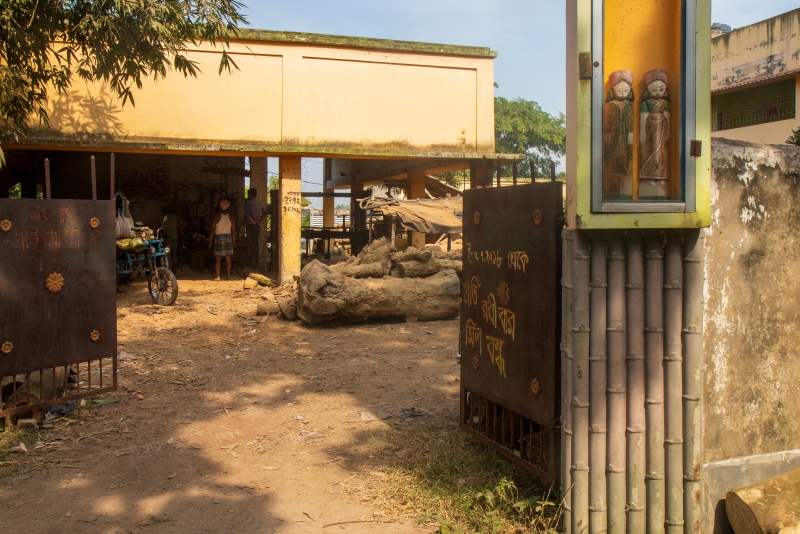
Where to stay
You can go for a day trip to Natungram or take a detour while going to Kalna, Nabadwip or Beharampore. If you want to stay there, you can contact Sudeb Bhaskar, who can arrange a stay in the newly constructed two-storied guesthouse by West Bengal Khadi and Village Industries Board (WBKVIB). It is beside the sawmill at one end of the village. The guesthouse has four rooms accommodating 16 people, an exhibit room and a small canteen.
Buy wooden products from Natungram
You can contact Sudeb Bhaskar, a full-time wood sculptor who gets his training from his ancestors. You need to call him and WhatsApp (contact number – 7001265448 / 8927083788). Then he will send a product catalogue to help you decide about your customised product. Then after placing the order, he will deliver it to your address within the stipulated time.
